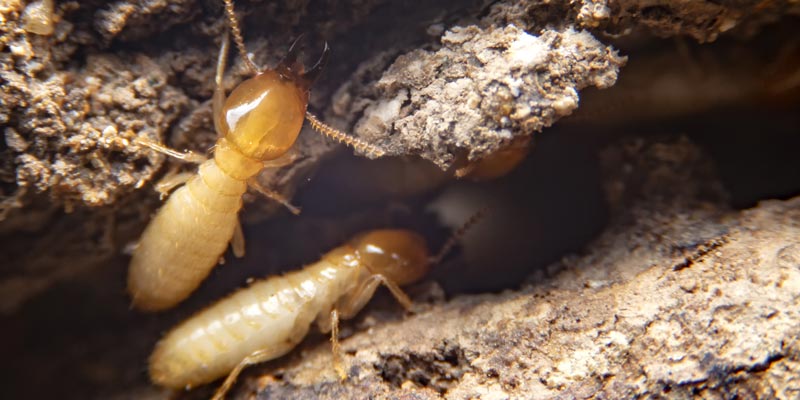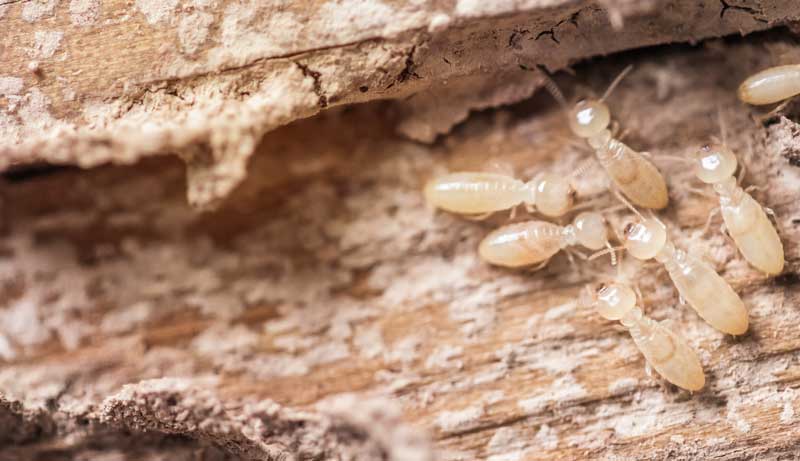Thousands of Dollars of Damage, Avoided
The mention of termites often sends shivers down homeowners’ spines. These tiny wood-eating insects have the potential to cause significant destruction, leading to an estimated $5 billion in damages annually. At Interstate Pest Management, we use the most up-to-date tools of the trade to take care of your termite problem and implement preventive measures to make sure that it does not return.
Types of Termites Common in the Pacific Northwest
In the Pacific Northwest, the most common types of termites are the Western subterranean termite and the Dampwood termite.
- Western subterranean termites are widely distributed across the Pacific Northwest and are known for underground colonies.
- Dampwood termites are commonly found in areas with high moisture levels, and infest decaying wood structures.
Both types of termites can cause significant damage to homes and structures if left untreated. It is crucial for Pacific Northwest homeowners to be vigilant and seek professional termite control services at the first sign of an infestation.
Our Termite Control Process
- Inspection and Identification: Your Interstate Pest Technician will conduct a thorough inspection of the property to identify termite species and determine the extent of the infestation, as well as assess potential risk factors and vulnerable areas for termite activity.
- Customized Treatment Plan: We will then tailor a treatment plan based on the inspection findings and the specific termite species present. This includes utilizing effective and eco-friendly methods for termite eradication and implementing preventative measures to minimize the risk of future infestations.
- Ongoing Monitoring and Maintenance: To ensure termite problems do not persist, your tech will:
– Schedule regular follow-up visits to monitor the treated areas and ensure the effectiveness of the control measures.
– Offer recommendations to safeguard your property against future termite infestations.
– Providing ongoing support and termite control services to maintain a termite-free environment.
Request a Free Quote
You can also call us at 360.382.2451 OrBook Instantly Here
"*" indicates required fields


Wood Destroying Organisms (WDO) Structural Pest Inspections
Protect Your Property with Expert WDO Structural Pest Inspections
Structural pest inspections are a critical safeguard often overlooked by property owners. Wood-destroying organisms can wreak havoc on the integrity of buildings, causing substantial damage over time. It’s essential to stay vigilant and detect these destructive pests early.
At Interstate Pest Management, we understand the significance of identifying and addressing WDO infestations promptly. Serving Portland, Vancouver, Longview, Kelso, and the surrounding areas, our trusted professionals have been safeguarding homes and businesses since 1963.
Why WDO Inspections Matter
Wood-destroying organisms encompass pests that harm wood, including carpenter ants, subterranean termites, wood-infesting beetles, and rot fungus. Properties in wet climates or with plumbing issues are especially vulnerable to infestations.
Spotting a WDO outbreak before it escalates can be challenging. Look for signs such as termite tubes, nests, swarming, damaged wood, and deceased insects.
Certified Structural Pest Inspector: When to Hire
Consider engaging a certified structural pest inspector in the following scenarios:
- When Buying a New Home: Ensure a thorough inspection before making an offer, as standard home inspections may not include pest assessments.
- When Refinancing Your Home: Many refinancing loans require a structural pest inspection, making it an ideal time to schedule an appointment.
- Suspected Infestation: If you notice any signs of an infestation, don’t delay; contact local experts immediately to prevent costly damage.
- Routine Checkup: Routine inspections are essential to detect pests in hiding, particularly in low-traffic areas like crawl spaces or basements.
Residential and Commercial WDO Inspections
With almost 60 years of experience, Interstate Pest Management offers comprehensive industry-standard inspections for both residential and commercial properties. Our meticulous inspectors provide detailed written reports of findings, ensuring you have the information you need to take action.
Secure your property from wood-destroying organisms – schedule your WDO structural pest inspection with Interstate Pest Management today! Call now to protect your investment.





